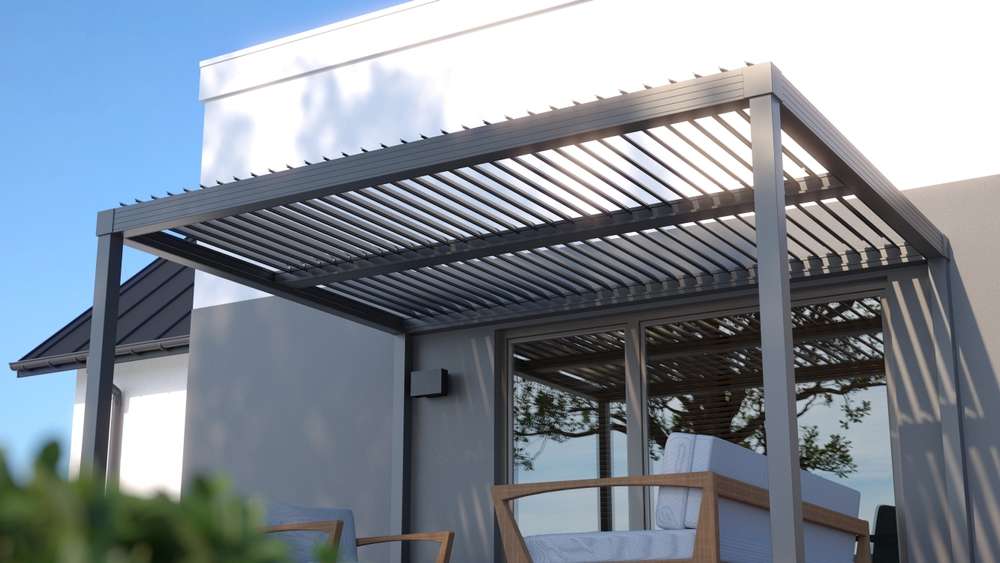Aluminum Pergolas in 2025: Modern and Effective Shading Solutions for Terraces
Aluminum pergolas have emerged as versatile outdoor structures that combine aesthetic appeal with practical functionality for terrace spaces. These modern architectural elements offer homeowners an opportunity to create defined outdoor living areas while providing adjustable protection from weather elements. As outdoor living continues to gain popularity, aluminum pergolas represent a durable and low-maintenance solution for enhancing terrace environments throughout 2025.

What Are the Benefits of Aluminum Pergola for Your Terrace in 2025?
Aluminum pergolas offer numerous advantages that make them particularly suitable for contemporary terrace applications. The material’s inherent resistance to corrosion ensures longevity in various weather conditions, while its lightweight properties reduce structural load requirements compared to traditional materials like wood or steel. Modern aluminum pergolas feature powder-coated finishes that resist fading and maintain their appearance over extended periods.
The versatility of aluminum allows for integration of motorized louver systems, LED lighting, and weather sensors that automatically adjust louver positions based on environmental conditions. These technological enhancements provide users with precise control over sunlight exposure and ventilation, creating comfortable outdoor spaces regardless of weather variations. Additionally, aluminum’s recyclable nature aligns with sustainable building practices increasingly valued by environmentally conscious homeowners.
How Do Design and Functionality of Modern Pergolas Work Together?
Contemporary pergola designs emphasize clean lines and minimalist aesthetics that complement modern architectural styles. Manufacturers now offer modular systems that allow customization of dimensions, colors, and features to match specific terrace requirements. Integrated drainage systems within the pergola structure effectively manage rainwater runoff, while hidden wiring accommodates lighting and automation components without compromising visual appeal.
Functional elements include adjustable louver systems that provide variable shade coverage throughout the day. Some models incorporate retractable fabric panels or glass inserts that can transform open pergolas into enclosed spaces when needed. The structural engineering of modern aluminum pergolas allows for spans of up to 20 feet without intermediate support posts, maximizing usable terrace space while maintaining structural integrity.
What Alternative Shading Solutions Include Awnings and Casement Awnings?
While aluminum pergolas provide excellent shading solutions, alternative options like retractable awnings and casement awnings serve different functional requirements. Retractable awnings offer complete coverage when extended and full sun exposure when retracted, making them suitable for terraces where users desire maximum flexibility. These systems typically mount to building facades and extend outward to cover designated areas.
Casement awnings, designed for window applications, can complement pergola installations by providing additional shade control for adjacent interior spaces. Fixed awnings offer permanent shade solutions at lower costs but lack the adaptability of pergola louver systems. Shade sails represent another alternative, providing contemporary aesthetics and partial coverage, though they require multiple anchor points and offer less weather protection than enclosed pergola designs.
How Effective is Protection from Solar Radiation?
Modern aluminum pergolas with adjustable louver systems provide measurable protection from harmful ultraviolet radiation while maintaining natural ventilation. Studies indicate that properly positioned louvers can block up to 95% of direct solar radiation during peak sun hours. The ability to adjust louver angles throughout the day allows users to optimize shade coverage while preserving beneficial natural light.
The thermal properties of aluminum help dissipate absorbed heat, preventing the structure itself from becoming a significant heat source. Some manufacturers offer louvers with reflective coatings that further reduce heat absorption and improve cooling efficiency in covered areas. When combined with side panels or curtains, pergolas can create microclimates that reduce ambient temperatures by several degrees compared to fully exposed terrace areas.
| Pergola Type | Provider | Key Features | Cost Estimation |
|---|---|---|---|
| Motorized Louvered | StruXure | Weather sensors, LED integration | $15,000-$25,000 |
| Manual Adjustable | Azenco | Powder-coated aluminum, modular | $8,000-$15,000 |
| Fixed Louver | SunLouvre | Standard sizes, quick installation | $5,000-$10,000 |
| Retractable Fabric | ShadeFX | Automated operation, wind sensors | $12,000-$20,000 |
Prices, rates, or cost estimates mentioned in this article are based on the latest available information but may change over time. Independent research is advised before making financial decisions.
Aluminum pergolas continue to evolve as sophisticated outdoor living solutions that address multiple functional requirements while enhancing terrace aesthetics. The combination of durability, customization options, and technological integration makes them valuable additions to residential outdoor spaces. As manufacturers continue developing innovative features and installation methods, aluminum pergolas remain practical investments for homeowners seeking to maximize their terrace potential throughout 2025 and beyond.




